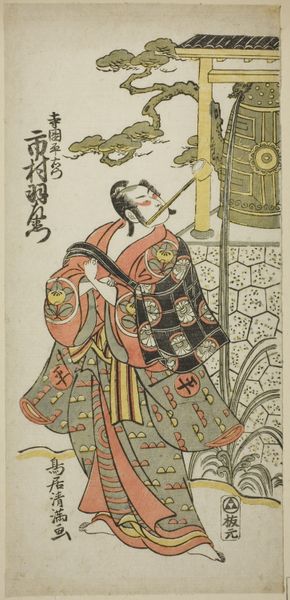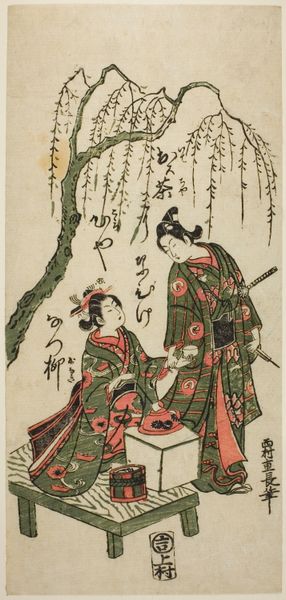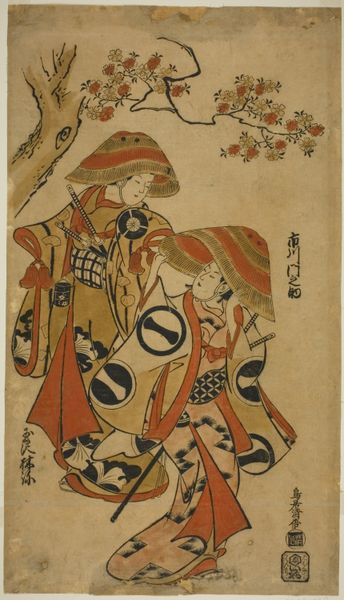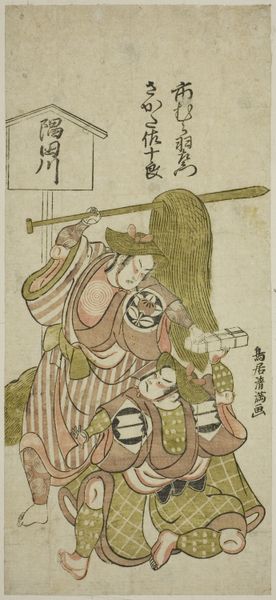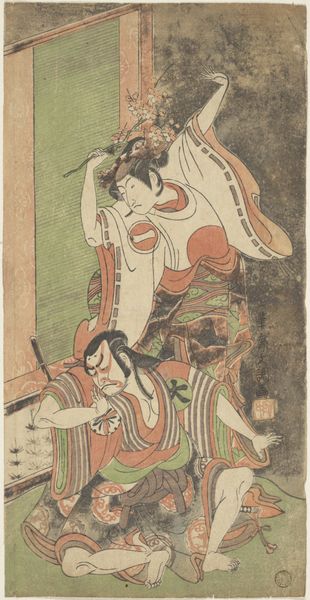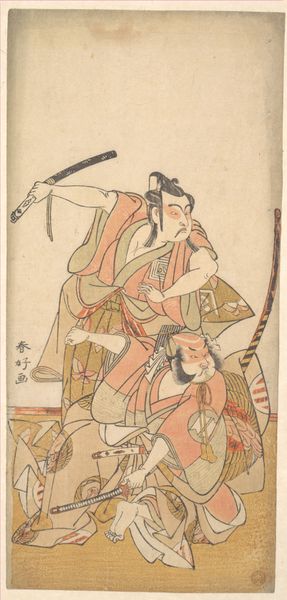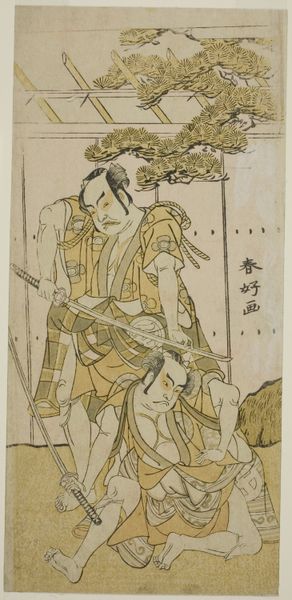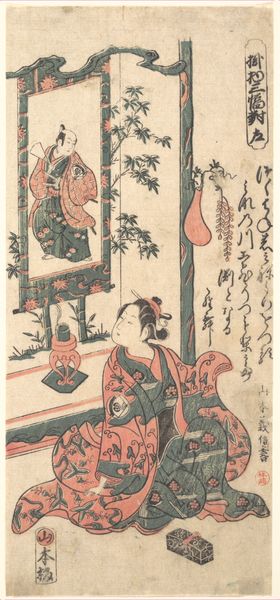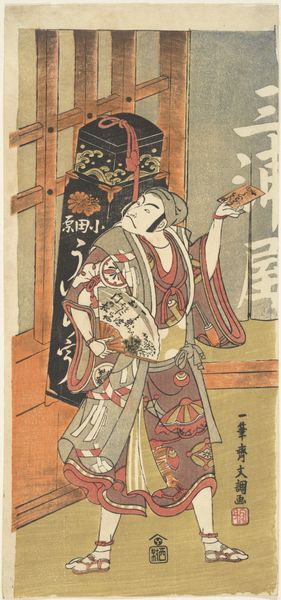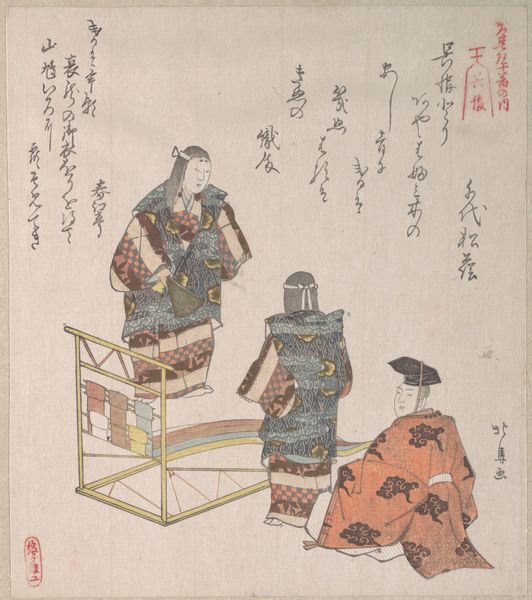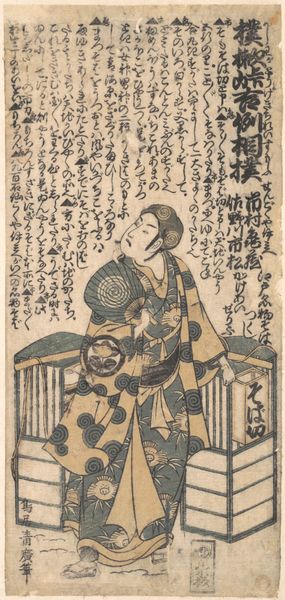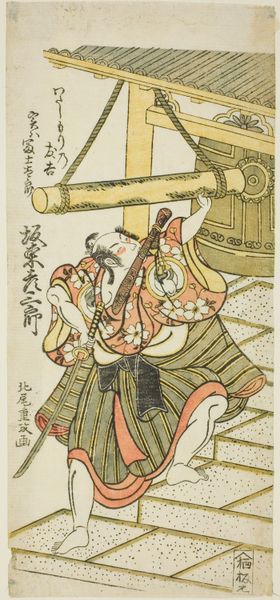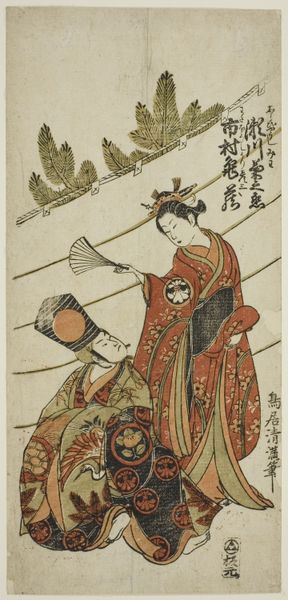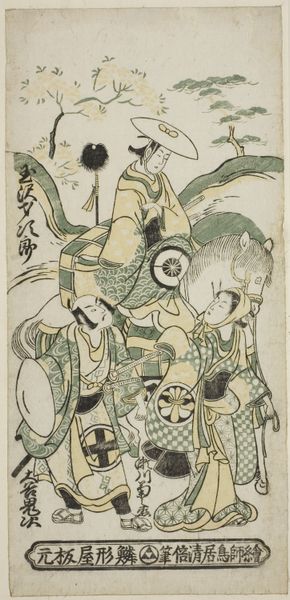
print, woodblock-print
#
narrative-art
# print
#
asian-art
#
ukiyo-e
#
figuration
#
woodblock-print
#
genre-painting
Dimensions: 56.4 × 29.0 cm
Copyright: Public Domain
Curator: I find this woodblock print, circa 1708, by Okumura Masanobu deeply poignant. It’s titled "Two Lovers, Oshichi and Kichisaburo." The Art Institute of Chicago is fortunate to have it in their collection. Editor: There's an immediate tension to this image—it feels like a secret encounter laden with emotional weight. The flat planes of color and bold linework create a compressed sense of space that emphasizes the figures and heightens their interaction. Curator: Absolutely. Masanobu skillfully utilizes ukiyo-e traditions to convey a complex narrative in a single frame. We see a young woman and man engaged in conversation near a torii gate. The inclusion of Japanese script is important: it acts as an integral component of the overall visual design, drawing viewers further into the story's cultural context. Editor: Ukiyo-e were designed for mass production, right? Considering this, I’m really interested in how the layering of these specific woodblocks creates these textile designs, the varying weights of line, the flatness overall. This isn’t some grand oil painting intended to impress elites—this is made through a carefully planned, reproducible process to disseminate widely. Curator: Precisely! The kimonos' motifs—especially those large wheel patterns—echo deeper social narratives. Visually, the wheels might represent transience and reincarnation. Beyond their decorative value, consider them powerful indicators of time, life’s cycles, and change—concepts that are intimately connected to the story of Oshichi, a young woman who tragically met her end because of love. Editor: The texture and impression of wood, of the labor embedded in repetitive motions. Even that faded salmon-color is compelling. The intentional choice to reveal the process speaks volumes—these are artworks inextricably bound to labor, to material realities, and intended for consumption by a diverse audience. Curator: It speaks volumes about the cultural values assigned to love, sacrifice, and even rebellion during the Edo period. This piece serves as an interesting lens through which one can comprehend the power dynamics inherent within Japanese society at that time. It highlights that the individual often had little to no control over his or her destiny in such instances. Editor: This artwork pulls together an entire era’s worth of cultural context, craft techniques, and social commentary. It really allows one to appreciate how interconnected all these elements can be.
Comments
No comments
Be the first to comment and join the conversation on the ultimate creative platform.
